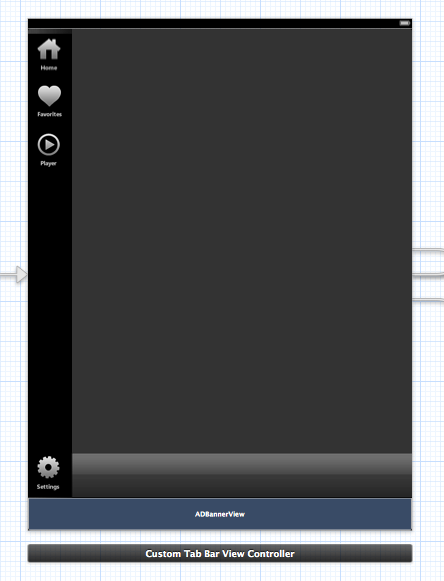Reputation: 709
Segue always loads new instance of view
I'm executing a segue like so;
[self performSegueWithIdentifier:@"showSecondView" sender:self];
But the behavior is that it will always "load" the new view rather than show the existing view if it was already loaded.
My question is, how can I keep a view in memory once I've loaded it, so that future segue calls will simply "show" the existing view?
Thanks
EDIT:
Here is my user interface design. It's essentially a custom side tabbar view controller with a UIView (the big gray block) where all of the subviews are placed.

Upvotes: 2
Views: 1756
Answers (1)

Reputation: 438212
The short answer is that iOS isn't well suited for that, but you might be able to do so. It depends.
The question is how is that view's controller represented in the view controller hierarchy. The standard options are pushViewController (a push segue) or presentViewController (a modal segue). You might be able to do a custom segue that takes advantage of view controller containment (see WWDC 2011 session 102), but I'd be surprised if that would be something you'd want to pursue. Usually when you hear people talking about the frustration of creating new views is a result of their wanting to return to some main view, but neglecting to popToRootViewController and instead having a segue back to that root scene.
A wholly theoretical (and probably impractical) answer that might come up is to use a singleton and do some slight of hand to transition views, but after watching WWDC 2011 session 102 on view controller containment in which they belabor the importance of keeping one's view hierarchy synchronized with the view controller hierarchy, so I don't think that makes sense.
I might be able to make a more meaningful suggestion if I understood your desired user interface. For 99% of apps, they are geared around pushing/popping views, presenting/dismissing modal views, or using some container (e.g. a tab bar container or some custom container) for jumping between sibling views. What is your user interface flow?
Upvotes: 1
Related Questions
- ViewController not performing segue as expected
- viewController is presented before the segue has been passed
- segue creating new instance of view controller swift
- How to prevent performing the same segue twice?
- Show (Push) Segue Leaving Imprint of Previous View
- Xcode - issue of push view by segue
- How to ensure that View Controller does not reload when segueing?
- Segue not working correctly
- UIStoryboard instantiate new UIViewController object every time a segue is performed?
- Trouble firing segue